-
 bitcoin
bitcoin $103128.103252 USD
-3.33% -
 ethereum
ethereum $3437.127692 USD
-4.86% -
 tether
tether $0.999700 USD
-0.02% -
 xrp
xrp $2.403993 USD
-5.73% -
 bnb
bnb $961.374676 USD
-4.11% -
 solana
solana $154.938665 USD
-8.18% -
 usd-coin
usd-coin $1.000113 USD
0.03% -
 tron
tron $0.298122 USD
0.30% -
 dogecoin
dogecoin $0.172428 USD
-5.76% -
 cardano
cardano $0.557625 USD
-7.13% -
 hyperliquid
hyperliquid $38.740701 USD
-6.51% -
 chainlink
chainlink $15.306051 USD
-7.51% -
 bitcoin-cash
bitcoin-cash $507.558648 USD
-3.26% -
 stellar
stellar $0.281899 USD
-6.74% -
 unus-sed-leo
unus-sed-leo $9.241811 USD
0.57%
How to view OBV's continuous increase in volume during a decline? Is it the main force selling?
OBV's rise during a crypto price drop may signal institutional accumulation, but traders should use additional analysis to confirm, as false signals are possible.
May 23, 2025 at 01:21 pm
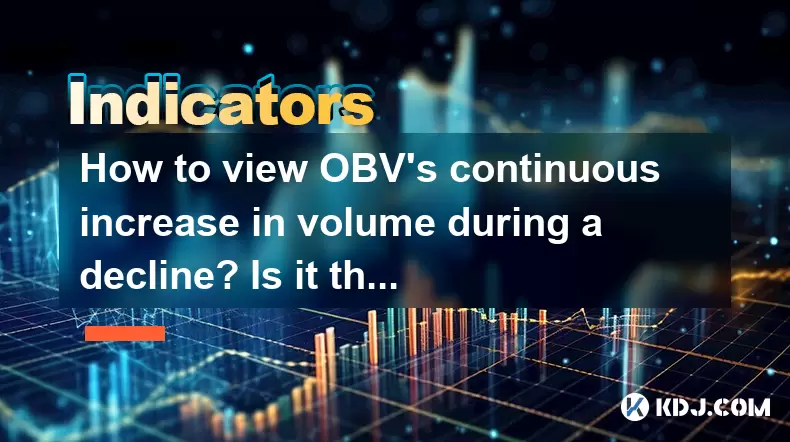
The On-Balance Volume (OBV) indicator is a crucial tool used by traders in the cryptocurrency market to gauge the flow of volume in relation to price movements. When traders observe a continuous increase in OBV during a price decline, it raises questions about the underlying market dynamics. Specifically, it leads to inquiries about whether this scenario indicates that the main force, or the large institutional investors, are selling off their positions. Let's delve into how to view OBV's continuous increase in volume during a decline and whether it signals the main force selling.
Understanding the OBV Indicator
The On-Balance Volume (OBV) indicator is designed to measure buying and selling pressure by adding volume on up days and subtracting volume on down days. The formula for OBV is straightforward:
- If today's closing price is higher than yesterday's closing price, then: OBV = Previous OBV + Today's Volume
- If today's closing price is lower than yesterday's closing price, then: OBV = Previous OBV - Today's Volume
- If today's closing price is equal to yesterday's closing price, then: OBV = Previous OBV (no change)
The OBV line helps traders identify potential trends and confirm price movements. An increasing OBV suggests that volume is flowing into the asset, typically indicating buying pressure. Conversely, a decreasing OBV suggests selling pressure.
OBV's Continuous Increase During a Decline
When the OBV continues to increase while the price of a cryptocurrency declines, it presents a seemingly contradictory situation. This scenario can be interpreted in several ways:
Divergent Signals: A rising OBV during a price decline indicates a divergence between price and volume. This divergence might suggest that despite the falling prices, there is still significant buying interest in the asset. The volume is increasing, which could mean that some traders are accumulating the cryptocurrency at lower prices.
Potential Accumulation: If the OBV is rising while the price is falling, it might indicate that smart money or institutional investors are accumulating the asset. They could be buying the dips, taking advantage of the lower prices to build their positions.
False Signals: It's also possible that the rising OBV during a decline could be a false signal. Market manipulations, such as wash trading or spoofing, could lead to increased volume without corresponding changes in the price.
Is It the Main Force Selling?
Determining whether the main force, typically large institutional investors, is selling during a scenario where OBV increases during a decline requires a more nuanced analysis. Here are some points to consider:
Volume Distribution: Analyzing the distribution of volume across different time frames can provide insights. If large volumes are concentrated in specific periods, it might suggest that institutional investors are involved. Tools like volume profile can help identify these patterns.
Order Book Analysis: Examining the order book for large sell orders can indicate the presence of institutional selling. Level II data provides more detailed information on the order book, which can be useful for this analysis.
Market Sentiment: Understanding the broader market sentiment and news can also help. If there are negative developments or announcements, it might lead to selling pressure from retail and institutional investors alike.
Technical Indicators: Combining OBV with other technical indicators, such as the Relative Strength Index (RSI) or Moving Average Convergence Divergence (MACD), can provide a more comprehensive view. If these indicators also show bearish signals, it might suggest that the main force is indeed selling.
Practical Steps to Analyze OBV and Price Decline
To effectively analyze a situation where OBV is increasing during a price decline, traders can follow these steps:
Select a Time Frame: Choose an appropriate time frame for analysis. Shorter time frames like 1-hour or 4-hour charts can provide more granular data, while daily or weekly charts offer a broader perspective.
Plot the OBV Indicator: Add the OBV indicator to your chart. Most trading platforms allow you to easily add this indicator to your chart.
Identify the Divergence: Look for periods where the price is declining, but the OBV line is trending upwards. Mark these periods on your chart.
Analyze Volume Patterns: Use volume indicators like Volume Weighted Average Price (VWAP) or Volume Profile to understand the distribution of volume during these periods.
Check for Institutional Activity: Use tools like Level II data or order flow analysis to identify potential institutional activity. Look for large sell orders or significant volume spikes.
Combine with Other Indicators: Add other technical indicators to your chart to confirm the signals. For instance, if the RSI is also showing bullish divergence, it might reinforce the idea of accumulation.
Monitor Market Sentiment: Keep an eye on news and social media to gauge the overall market sentiment. Negative news might explain the price decline despite the rising OBV.
Case Study: Bitcoin Price Decline with Rising OBV
Let's consider a hypothetical example where Bitcoin's price is declining, but the OBV is continuously increasing. Here's how a trader might analyze this situation:
Initial Observation: The trader notices that Bitcoin's price has been declining over the past week, but the OBV line has been steadily rising.
Volume Analysis: The trader uses the Volume Profile tool and sees that the majority of the volume is concentrated during specific times of the day, suggesting institutional activity.
Order Book Check: The trader accesses Level II data and observes large buy orders at lower price levels, indicating potential accumulation by institutional investors.
Technical Confirmation: The trader adds the RSI to the chart and sees that it is also showing a bullish divergence, confirming the possibility of accumulation.
Market Sentiment: The trader checks news and social media and finds no significant negative news that could explain the price decline, further supporting the idea that smart money is buying the dips.
Frequently Asked Questions
Q: Can OBV be manipulated by traders to create false signals?A: Yes, OBV can be manipulated through practices like wash trading or spoofing. These manipulations can lead to increased volume without corresponding price changes, creating false signals. Traders should use additional indicators and analysis to confirm OBV signals.
Q: How reliable is OBV compared to other volume-based indicators?A: OBV is a widely used and reliable volume-based indicator, but it should not be used in isolation. Combining OBV with other indicators like VWAP, RSI, and MACD can provide a more comprehensive analysis of market dynamics.
Q: Is it possible for retail investors to influence OBV significantly?A: While retail investors can contribute to volume, significant and sustained changes in OBV are more likely to be driven by institutional investors due to their larger trading volumes. However, coordinated actions by a large number of retail investors can also impact OBV.
Q: How can traders use OBV to identify potential trend reversals?A: Traders can use OBV to identify potential trend reversals by looking for divergences between the OBV line and price. If the price is making new lows while OBV is making new highs, it might indicate a potential bullish reversal. Conversely, if the price is making new highs while OBV is making new lows, it could signal a bearish reversal.
Disclaimer:info@kdj.com
The information provided is not trading advice. kdj.com does not assume any responsibility for any investments made based on the information provided in this article. Cryptocurrencies are highly volatile and it is highly recommended that you invest with caution after thorough research!
If you believe that the content used on this website infringes your copyright, please contact us immediately (info@kdj.com) and we will delete it promptly.
- XRP ETF Buzz and AI Altcoins: Navigating Crypto's Evolving Landscape
- 2025-11-13 03:00:01
- Dogecoin, Investor, Knowledge: Navigating the Meme Coin Mania in 2025
- 2025-11-13 00:40:00
- Mississippi Retailers and the Penny Predicament: What's a Cash Customer to Do?
- 2025-11-13 01:00:02
- Hyperliquid, Aster Whales, and Zero Knowledge Proof: A New Era of Crypto?
- 2025-11-13 01:20:01
- XRP vs. Crypto Presales: Can Digitap or LivLive Deliver a 100x Return?
- 2025-11-13 01:15:01
- Hedera, Regulated Assets, and Dual Token Flexibility: A New Era for Tokenization
- 2025-11-13 01:45:01
Related knowledge

What's the best way to learn the TRIX indicator?
Nov 10,2025 at 12:39pm
Understanding the Basics of the TRIX Indicator1. The TRIX (Triple Exponential Average) indicator is a momentum oscillator designed to filter out short...
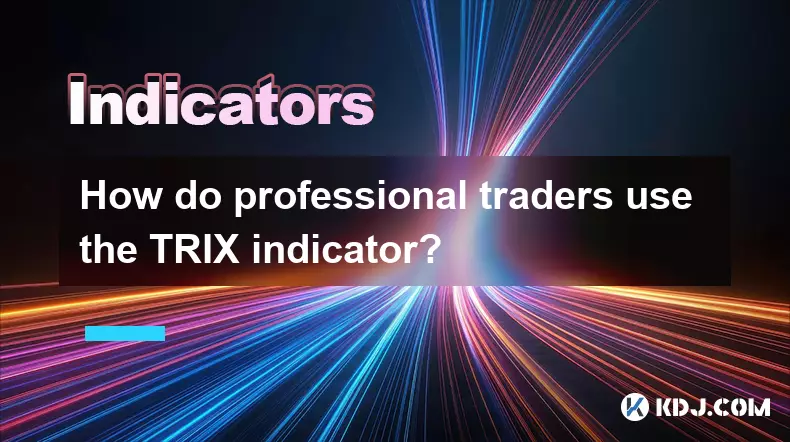
How do professional traders use the TRIX indicator?
Nov 06,2025 at 04:40pm
Understanding the TRIX Indicator in Crypto TradingThe TRIX (Triple Exponential Average) indicator is a momentum oscillator used by professional trader...
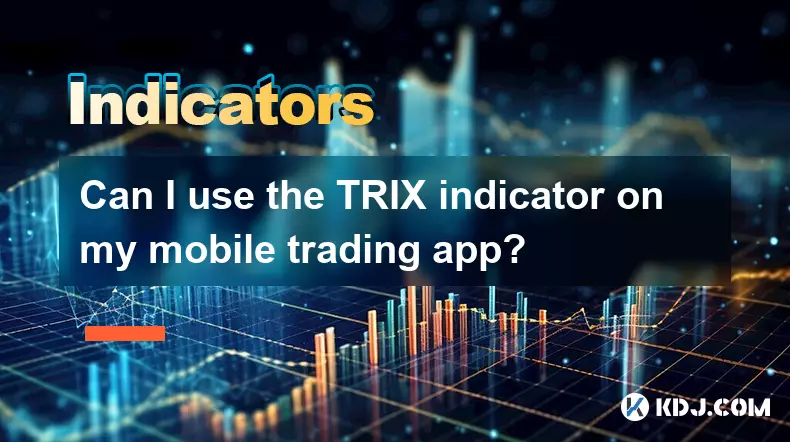
Can I use the TRIX indicator on my mobile trading app?
Nov 07,2025 at 07:40pm
The TRIX indicator, a momentum oscillator designed to filter out short-term fluctuations and highlight long-term trends, has become increasingly popul...
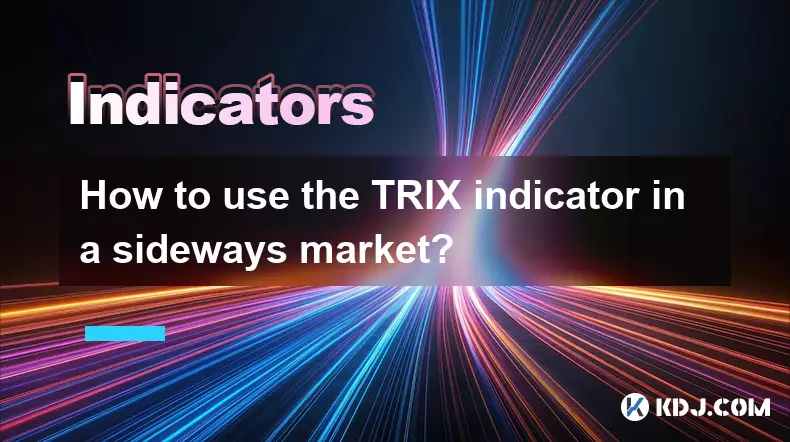
How to use the TRIX indicator in a sideways market?
Nov 10,2025 at 03:00pm
Bitcoin’s Role in Decentralized Finance Evolution1. Bitcoin remains the cornerstone of decentralized finance, serving as both a store of value and a b...
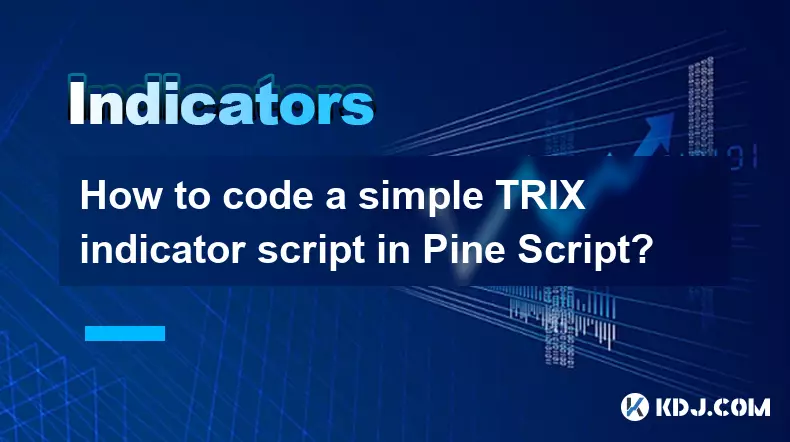
How to code a simple TRIX indicator script in Pine Script?
Nov 07,2025 at 06:20am
How to Code a Simple TRIX Indicator in Pine Script The TRIX (Triple Exponential Moving Average) indicator is widely used in cryptocurrency trading to ...
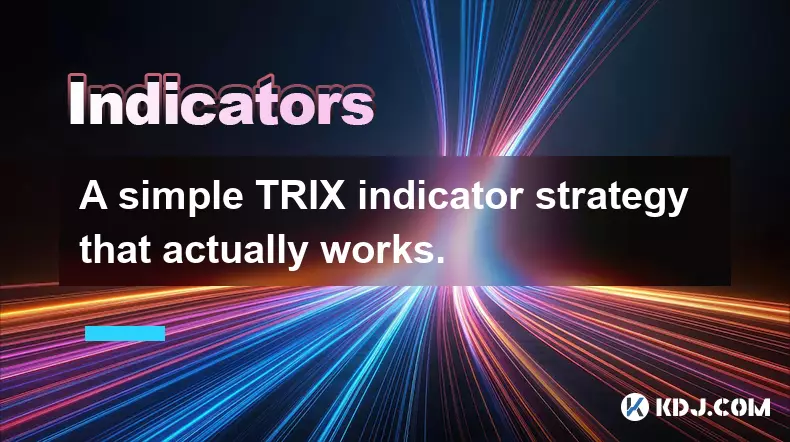
A simple TRIX indicator strategy that actually works.
Nov 08,2025 at 05:39pm
Understanding the TRIX Indicator in Crypto Trading1. The TRIX (Triple Exponential Average) indicator is a momentum oscillator designed to filter out s...

What's the best way to learn the TRIX indicator?
Nov 10,2025 at 12:39pm
Understanding the Basics of the TRIX Indicator1. The TRIX (Triple Exponential Average) indicator is a momentum oscillator designed to filter out short...

How do professional traders use the TRIX indicator?
Nov 06,2025 at 04:40pm
Understanding the TRIX Indicator in Crypto TradingThe TRIX (Triple Exponential Average) indicator is a momentum oscillator used by professional trader...

Can I use the TRIX indicator on my mobile trading app?
Nov 07,2025 at 07:40pm
The TRIX indicator, a momentum oscillator designed to filter out short-term fluctuations and highlight long-term trends, has become increasingly popul...

How to use the TRIX indicator in a sideways market?
Nov 10,2025 at 03:00pm
Bitcoin’s Role in Decentralized Finance Evolution1. Bitcoin remains the cornerstone of decentralized finance, serving as both a store of value and a b...

How to code a simple TRIX indicator script in Pine Script?
Nov 07,2025 at 06:20am
How to Code a Simple TRIX Indicator in Pine Script The TRIX (Triple Exponential Moving Average) indicator is widely used in cryptocurrency trading to ...

A simple TRIX indicator strategy that actually works.
Nov 08,2025 at 05:39pm
Understanding the TRIX Indicator in Crypto Trading1. The TRIX (Triple Exponential Average) indicator is a momentum oscillator designed to filter out s...
See all articles










































































